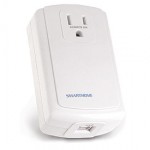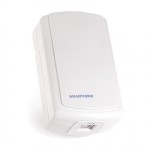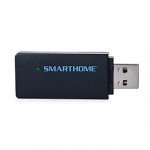Adventures in Insteon
I believe I have outgrown my SmartLinc controller. It has all the workings of an absolutely amazing Insteon powerline modem (PLM) as a network controller, but almost no companies put effort into supporting it. Instead they focus on older hardwired technologies, even though the SmartLinc is one of the most (if not the most) popular Insteon controller and thus possibly representing a large untapped market for them.
Anyway, the SmartLinc is great for running basic timers and allowing web access to Insteon devices. However, I need more than simple timers and web access now. I want to be able to incorporate logic into our house, so that it keeps tracks of certain modes for example. Such as a nighttime security mode, an away-from-home security mode, a vacation mode, and more. I also want to be able to script a lot of this myself, so I can devise new scenarios or adapt existing ones if/when I acquire new equipment.
The SmartLinc will technically allow you to do all this provided you have a computer running 24/7 to handle the logic. However, because there are no programs offering an elegant interface to the PLM side of the SmartLinc, my coding attempts would be written in Python or Java and thus would be hard to maintain. The alternative is to get something other than a SmartLinc and use it with a full-featured desktop software package that allows for easy configuring of all the fancy stuff I want to do.
Through my research, I love the usability and features of Indigo. For anything it can’t already do, it gives you access to AppleScript, a language similar to the very first language I ever programmed in (HyperTalk from back in the HyperCard days). It is also very actively and continually supported. The price floors me though ($180 + tax)! Not to mention the hardware side of all this, that I now need to buy a controller to replace the SmartLinc.
Hardware-wise, there are really only three options I would consider to get a computer to talk to an Insteon network. There are alternatives if you don’t want to leave a computer running, but since I have a media server running it would make a perfect home automation server as well.
 PowerLinc 2414U – Features a pass-through plug and the ability to store simple timers. Single-band only, meaning it only communicates through the power line and not wirelessly.
PowerLinc 2414U – Features a pass-through plug and the ability to store simple timers. Single-band only, meaning it only communicates through the power line and not wirelessly. PowerLinc 2413U – A dual-band device so your network is more reliable. No ability to upload simple timers and no pass-through plug.
PowerLinc 2413U – A dual-band device so your network is more reliable. No ability to upload simple timers and no pass-through plug. RF Insteon USB Interface 2448A7 – Wireless only and very small form-factor. No ability to upload timers.
RF Insteon USB Interface 2448A7 – Wireless only and very small form-factor. No ability to upload timers.
- Good wireless Insteon setup already in place in my house
- Small, easy to install and doesn’t need a dedicated outlet
- Future computing will becoming smaller and increasingly mobile
So now I’m just waiting for it to show up in the mail. For all I’ve done with the SmartLinc, I still think it is a fantastic device. Chris Karr from Shion Online and QW Home Automation from Teraspaces Inc are fleshing out support for the SmartLinc controller. However, the most robust home-automation software packages out there have shied away from it. If I can’t sell the SmartLinc, perhaps one day it will become handy again. Until then, I have to figure out how to get the house to welcome me home with the evening news headlines while taking off my shoes… 🙂
Explore posts in the same categories: Uncategorized